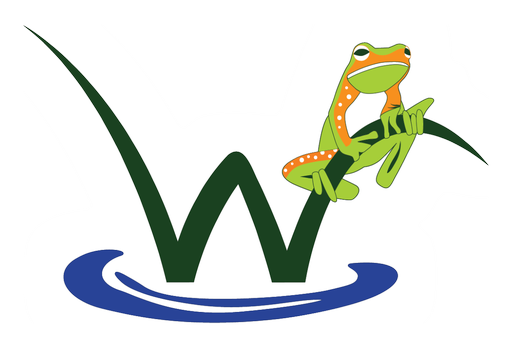It is sometimes a little too easy not to notice these beautiful and delicate clusters and rings of fungi growing along pathways and under lush shrubs and trees, seemingly in a world of their own. But with a bit of attention, we can uncover their fascinating presence nearly everywhere, even in our wetlands.
Western Australia's southwest is considered one of the most biodiverse regions globally, and we are renowned for our stunning wetlands, colourful wildflowers and fantastic woodlands that are abuzz with unique and extraordinary wildlife. These wetlands, banksia woodlands, and bushlands are also home to some very diverse fungi found in many stunning forms and colours.
Perhaps the reason these fungi are important to us, beyond their aesthetic value, is because they perform many ecological roles and signal the health of the wetland. For example, in their role as saprobes, parasites, and agents of biodeterioration. So fungi are essential, but they are often the under-appreciated part of the ecosystem.
There are at least ten times as many fungi as plants in Australia. To give you a ballpark figure, this translates to about 140,000 species in Western Australia alone, including macrofungi and microfungi. Towards the end of July and entering spring is an opportune time for seeing our fungi fruiting.
We hope to take you on a journey, a foray if you will, into the fascinating world of wetland fungi through this blog post. We have a smattering of colourful images and interesting facts about our fungi to make this journey enjoyable.
About Fungi
Not surprisingly, fungi are neither plants nor animals. Instead, they belong to a separate kingdom of their own, forming an enormous and phenomenally diverse group. Borrowing a line from Wikipedia - "Where plants produce, and animals consume, the fungi recycle, and they ensure the sustainability of ecosystems."
Fungi are the basis of many natural processes. They play many functional and ecological roles crucial to ecosystem functioning, such as – breaking down natural debris, leaf litter, and other fragments into nutrients to make them available for plants. They also provide food for animals.
Why Are Fungi Important?
Fungi play numerous roles that keep the ecosystem in balance and ensure its sustainability. Here are a few functions that highlight this:
- They are the wetland recyclers - breaking down tree litter and debris into nutrients.
- They aid in the uptake of nutrients by plants by breaking down complex organic matter into something more suitable for plants.
- Underground truffle-like fungi provide a food source for several native animals, including the woylies, potoroos and bandicoots.
- As indicators of wetland health, they signal the status of activity in and around the wetlands.
Fungi & Aboriginal Cultural Traditions
Very little is known about the Aboriginal cultural traditions involving fungi. Records of Aboriginal people suggest that they most likely utilised fungi and that this was regarded suspiciously by the early European settlers. A few species, such as Blackfellow's bread (Laccocephalum mylittae), were used and consumed, but the details are sketchy.
Europeans who came and settled in Australia over the past couple of centuries brought no strong fungal cultural traditions. And so, fungi have been largely overlooked and understated.
Various fungi growing around Bibra Lake in late Makuru. Photos by our volunteer Angela.
When To See Fungi Around Perth
Perth enjoys a temperate climate, and here fungi may fruit at any time of the year. But, as a norm, Perth sees at least two distinct and highly variable fruiting periods. They are:
From February to April:
You can see brief flashes of fungal growth around parks, lawns, and gardens during this period. Warm or hot and humid days, with spells of rain and humidity, can spur their growth.
Common fungi that can be spotted during this season include conehead fungus, ink caps and green-gilled mushrooms.
From May to July:
The substantial Autumn rains herald the start of the fungi season and the growth of many fungal fruiting bodies in and around Perth's wetlands and bushlands. Mid-June to mid-July is usually the peak period, but fungi can generally be spotted fruiting at any time from mid-May through to late July.
Early-season fungi that are common during this season are species of large boletes such as the variable gyroporus and amanitas such as the Small Warty Tuart Amanita.
Collecting Or Picking Fungus
Fungi are protected by the same laws that protect native plants – wildflowers, seeds and animals. It is illegal to collect them from national parks, and a permit may be needed to collect them.
Fungi Growing Around The Wetlands Centre
The trails and pathways around Bibra Lake and North Lake and around the Wetlands Precinct are great places to find fungi in different forms and colours. These delicate organisms grow in clusters, rings or sometimes on their own in the lush and damp ground, and it doesn't require any particular skill to spot them: only patience and keen eyesight.
To learn more about our amazing native plants, animals, and fungi and help us make sustained and continued efforts towards conserving and rehabilitating our wetlands, join our dedicated, warm and friendly team at The Wetlands Centre as a volunteer.
Visit our centre nestled in nature. We look forward to seeing you!
References
- Fungi of Australia. (2020). Retrieved 28 April 2022, from https://en.wikipedia.org/wiki/Fungi_of_Australia
- Forest and woodland fungi. (2020). Retrieved 28 April 2022, from https://www.dpaw.wa.gov.au/plants-and-animals/plants/235-forest-and-woodland-fungi
- The Urban Bush Telegraph – Winter 2005. The Urban Bushland Council WA Inc. Perth, Western Australia. Retrieved 28 April 2022, from https://www.bushlandperth.org.au/wp-content/uploads/2018/01/UBTmay05.pdf
- Bougher, N. L. (2009). Fungi of the Perth Region and Beyond: A self-managed field book. Western Australian Naturalists' Club (Inc.), Perth, Western Australia. Retrieved 28 August 2020, from https://www.wanaturalists.org.au
- Bell, Una (2012). The Value of Fringing Vegetation Mundaring, Western Australia, Retrieved 28 August 2020, from https://www.mundaring.wa.gov.au

0 comments on “Foray Into The Fascinating World of Wetland Fungi”